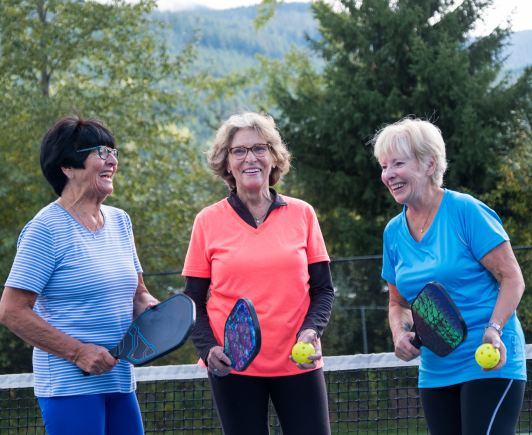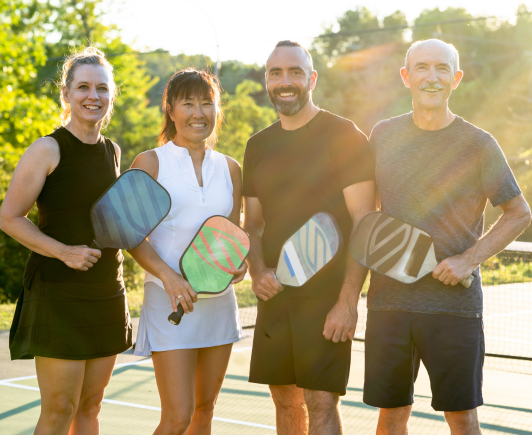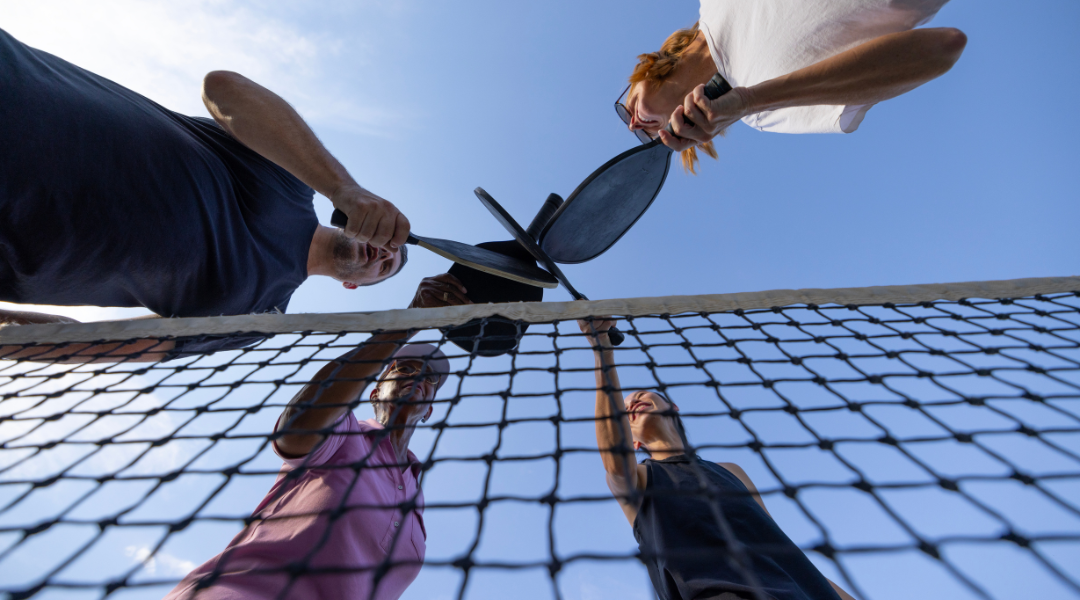As tennis players transition to the rapidly growing sport of pickleball, they often find that their tennis skills can provide a strong foundation yet require some adaptation. This guide explores how tennis players can effectively transfer their skills to pickleball, highlighting the adjustments necessary to excel in this dynamic sport.
Before diving into the specifics, it’s essential for crossover athletes to recognize the similarities and differences between tennis and pickleball:
With these differences in mind, let’s explore how tennis skills can be adapted for pickleball success.


While tennis allows powerful overhand serves, pickleball requires serves to be hit underhand, introducing a new dynamic for tennis players. However, tennis players can use their serving experience to develop precise and strategic serves in pickleball. Hit the ball like you’d hit a forehand ground stroke. Just be sure to start with your paddle tip all the way down and use a simpler swing. You must strike the bottom of the ball first, so beware of topspin, it can get you into illegal serve territory. As you get better you can incorporate topsin and slice or underspin into your serve repertoire just consult with a pro or a ref to be sure your serve is legal.
Tennis players are generally adept at volleying, a skill that is highly transferable to pickleball. The primary adjustment is the non-volley zone, or the kitchen. Tennis players need to practice staying out of this zone when volleying, which can be challenging initially. Drill sessions focusing on footwork around the kitchen can help players adapt their volleying tactics without committing faults. You’ll want to learn how to rotate your body mimicking a step, so your hips are towards the ball you are hitting. There are different styles of volleys depending on where your opponents are on the court. If your opponent is deep, you can use your tennis volley which will send the ball deep. If your opponent is up at the NVZ you’ll want to learn how to hit a punch volley where your paddle comes over the ball at a slight angle sending it down to the feet/ ground quicker. Blocking is somewhat like your tennis block with minor adjustments.
While the mechanics of groundstrokes in pickleball are like tennis, the smaller court size and the slower ball speed mean players must emphasize control over power. The major difference when hitting a ground stroke in pickleball is to drop your paddle tip down lower (Like your paddle is an extension of your arm) Your paddle needs to be lower than the ball you are hitting not parallel with it if you are trying to get depth on your ball. Tennis players can excel at pickleball by refining their soft game, particularly dinking—hitting the ball softly into the opponent’s non-volley zone. This skill is crucial in pickleball and can be a significant advantage. Eliminate your drop step back and your backswing when dinking but do rotate your hips or step forward to put the dink in your strike zone. Always SEE your paddle when you are at the NVZ line.
Tennis players excel in footwork and can leverage this skill in pickleball by adjusting to the court’s smaller size. The key is to make quicker, shorter movements and stay on the balls of your feet. Drills that emphasize lateral movements and transitions from the baseline to the kitchen line can be particularly beneficial. When at the NVZ line you can use a rocking motion form the ball of one foot to the other as you would use your little hop step in tennis. This motion will help you to feel quicker but will not risk you stepping on the line.
Tennis players often have a well-developed sense of point construction, which can be a huge asset in pickleball. The strategy in pickleball also involves setting up shots, though the pace and style of point construction differ due to the smaller court and slower ball. Tennis players should focus on using their shot placement skills to manipulate opponents’ positions and create openings.
The mental aspects of tennis, such as focus, discipline, and match management, are also vital in pickleball. Tennis players should apply these mental skills to manage the faster pace of pickleball games, where points are shorter and games can swing quickly.
Doubles play in tennis provides a solid foundation for pickleball doubles tactics. Communication, positioning, and shot coordination from tennis can all be adapted to pickleball. However, emphasis should be placed on understanding the specific roles and strategies unique to pickleball doubles, such as stacking and switching. It’s best to stay with your partner in pickleball so you eliminate angles your opponent can beat you with. Try not to play one up one back in pickleball.
For tennis players adapting to pickleball, targeted practice focusing on the nuances of pickleball is crucial. Participate in drills that emphasize pickleball-specific skills and play as many games as possible to gain experience.
For tennis players looking to cross over into pickleball, leveraging existing skills while adapting to the nuances of the new sport is key. By understanding the differences, focusing on skill transfer, and adjusting strategies and techniques, crossover athletes can rapidly improve their pickleball game and enjoy success in this engaging and social sport. Whether it’s through strategic serve placement, mastering the soft game, or leveraging doubles experience, the transition from tennis to pickleball can be both a rewarding and exhilarating journey.

IPTPA Master level pickleball pro, aiming to enhance the skills of players globally by making the game more enjoyable, effective, and fun.
